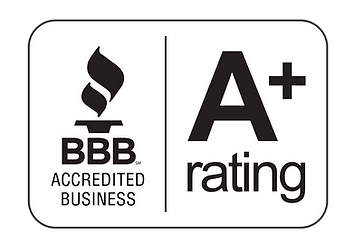Settlement Planning with Life Insurance
Peace of Mind
CProvide funds to Replace Caregivers to provide for disabled child or partner
Life Insurance in Settlement Plans
About Life Insurance | Use of Life Insurance in Personal Injury Settlement Planning
Life insurance can be an important component in the personal injury settlement planning process .4structures.com LLC offers a wide variety of life insurance solutions to its clients, to their lawyers and the general public. Following are some examples.
Cost of Replacing Caregiver Services
Life insurance may be an important element of a settlement plan when the settlement involves a minor child or incapacitated adult, particularly if the parents are the primary caregivers. In some cases we've seen grandparents are primary caregivers. Life insurance can be used to finance the cost of a replacement caregiver, or someone who will replace certain services that were provided for by the caregiver. This value of this use cannot be overemphasized.
Covering the Contingency of Loss of Spouse or Partner Caregivers for an Incapacitated Child
A couple should examine their own life insurance needs. The loss of a spouse or partner should be emotional enough. Add to that emotional scenario
what had been a shared physical, emotional and time burden becomes a burden on one person. Couples should also consider the time burden if such a scenario occurs and how it would affect the other children in their lives, while at the same considering potential implications on their career or business. Cash from life insurance proceeds, which is income tax free, can be helpful buffer to ensure the family's continued ability to meet its commitments and responsibilities. Where grandparents are raising children. We write grandparents too!
Estate Planning
- Large settlements that exceed Federal or State Exemptions, whether or not they include a structured settlement, bring Estate tax exposures. The use of life insurance allows for a substantial mitigation of the net cost of these taxes, due to the leverage provided by life insurance. Very simply, this works if the aggregate cost of life insurance through life expectancy is likely to be less than the tax exposure.
- Life insurance provides liquidity so that survivors can avoid the need to sell illiquid assets l ike real estate in a hurry and at distressed prices.
- Where there is a successful family business and there are multiple children but only one is interested in running it, parents can use life insurance to help equalize inheritances.
Estate Planning For Foreign Nationals
Very low estate tax exemptions for foreign nationals create a significant potential estate tax liability even on modest settlements . With advanced planning and provided the plaintiff is insurable, the cost can mitigated with life insurance.
Watch this informational podcast on uses of life insurance in settlement planning and financial planning featuring life insurance expert John Darer®
Key questions for life insurance buyers
- How much life insurance do I need?
- What type of life insurance should I buy?
- How do I pay for it?
(1) Amount of Life Insurance:
The amount of life insurance you need will depend on the use(s) for the insurance. In addition to the use cited above you may require a comprehensive review of your life insurance needs. You may contact 4structures' President John Darer, who is a Chartered Life Underwriter (CLU) or a settlement planner who is also qualified as a life insurance professional, and licensed in your state, to assist you in determining the appropriate amount. Furthermore, a periodic review of your existing coverage, if any, is very sensible. Settlement planners and structured settlement professionals need to know that the peculiarities concerning where one must be licensed for placement of structured settlement annuities do not exist when it comes to life insurance. If you want to be involved in this area you must be aware of the rules.
Click
life insurance calculator to visit Groove Financial Advisors, LLC calculators page..
(2) Form of Life Insurance:
(a) Several years back I heard from a fellow professional that he uses single premium life insurance to fund caregiver needs, the theory being you pay a single amount and you're done...its all paid up. We feel this is inappropriate in this context. If you buy single premium life its like buying a house with all cash down. With single premium life you have no leverage and in the event of an early death you have vastly overpaid for the coverage. If instead smaller ongoing premiums are funded by a structured settlement payment stream there should be a significant advantage. A Death Benefit Internal Rate of Return Analysis will be a helpful tool in the decision making process.
(b) Term life insurance is a relatively inexpensive way to protect against future hardships. Term is like renting. It is designed to solve temporary needs for finite period of time, NOT permanent needs. During the term, premiums must continue to be paid or the coverage will lapse. The need for level premiums generally precludes the use of less expensive yearly renewable term (YRT). Generally the maximum level term is 30 years, with other level term periods available . At the end of the level term period, the insured must be underwritten in the same or better underwriting class or the premiums will skyrocket, making them prone to lapse if available resources are not sufficient to pay the difference.
A number of life insurance companies offer so called Return of Premium Term (ROP) which costs a little more than regular term but returns the premium if the insured outlives the term period. For example, if one buys a 15 year ROP $750,000 policy and it costs $1,000 annually, then $15,000 is returned at the end of the 15 years IF the insured is still living.
(c) No Lapse Guarantee Universal Life is a popular choice and now offered by many major life insurance companies. Universal Life is an unbundled form of permanent life insurance. Think of a bucket with three spigots labeled "mortality charge", "expense charge" and "interest credit". The first two spigots drain the bucket at a varying pace while the latter adds to the bucket, at varying rates, along with planned and unplanned annual premiums. There must be enough in "the bucket" in order to keep the policy afloat. In the early 1980s the original version of universal was sold by some (not this author!) with outrageous long term projections using the high short term interest rates of the time. People were told that they could pay if the wanted to, or not pay, as the long term rates would hold enough value so that "the bucket" would not run dry and coverage lost. Many of those projections never came reality as interest rates declined and have never been the same since. Policyholders faced cash calls or lost coverage.
In the late 1990s so called "no lapse guarantee" Universal Life products were developed. No lapse guarantee universal life allows you to calculates the minimum amount of life insurance premium to be paid each year in order to contractually guarantee the death benefit until some future point in time. It is now possible to even get a no lapse guarantee Universal Life policy with a death benefit guarantee to age 120! The effect is a form of permanent term insurance because even if the bucket is empty the policy death benefit stays intact. One caveat however, is that all premiums must be paid or the guarantee will not apply, sort of like what happens with credit cards at low guaranteed rates and then you miss a payment.
(d)Whole Life is another form of permanent insurance which is designed to be in force for the "whole of life". In the UK that is what they actually call this form of policy. The policy has level premiums. However such policies offered through mutual life insurance companies companies, which are owned by their policyholders, and other "participating" contracts pay dividends which can be used to buy units of additional coverage (paid up additions), reduce premiums, be paid in cash, or accumulate at interest. The first two options are most popular. Other than single premium the coverage is the most expensive in terms of initial annual outlay. However, reinvested dividend additions can build up to an extent that there is enough to pay future premiums from future dividends. Dividends are a distribution of the divisible annual surplus of the mutual company and are NOT guaranteed.
(e) Indexed Universal Life is another popular form of life insurance, in which accounts grow based on changes in an index.
(f) Graded Benefit Life is form of life insurance that is helpful where a person has certain disabilities and/or medical issues that preclude being insured with other coverage. Graded benefit life has payouts that vary based on how long the insured survives from the policy issue date. For example if the face amount of the policy face amount is $100,000 the full face amount may not be payable for 4 years. In the interim a percentage of death benefit is payable if death occurs earlier than year 4..
(g) There are variable versions of universal and whole life which are less likely to be appropriate for needs of personal injury settlement planning because of the risk shift of investment performance onto the policyholder. They can only be obtained through life insurance agents and settlement planners, who affiliated through a broker dealer, who hold the required FINRA registrations and appropriately appointed.
(3) How to pay for life insurance
-
Parents can apply for and pay for coverage themselves.
- A first party trust set up to benefit the injured party can apply for and own the insurance and pay premiums
- A third party trust set up to benefit the injury party can apply for, own the insurance and pay premiums
- The injured party (if over age of majority and competent) can apply for, own and pay premiums on life of caregiver.
- On smaller settlements where the cost of a trust makes it impractical and child's money is being used, courts have approved the parent being the applicant,the owner and insured of the policy provided that restrictions on the parent's capacity as owner are put in place with respect to change of beneficiary, ability to factor, or surrender the policy for cash value.
- Premium financing options are available subject to lender terms.
A dedicated payment stream from a structured settlement can be used to pay the premiums.
(4) Some of the Tax issues involving life insurance
- Premiums paid are generally not deductible for federal or state income tax purposes
- Life insurance proceeds are generally received income tax free.
- Life insurance proceeds, if included in the estate, are not estate tax free. Careful planning is required with settlements where assets plus the insurance exceed (or will in the near future exceed) state or federal estate tax exemption.
- Li fe insurance policies where there is a single premium or there are large deposits of premium may be considered what is known as a "Modified Endowment Contract" (MEC) by the IRS. This can have negative ramification on withdrawals of cash value in whole life or other permanent type policies like single premium life.
(5) Other Uses For Life Insurance
(a) Underwriting of impaired risks
Now painfully aware of the vicissitudes of life, the injured party (if over age of majority, competent and insurable) may want to purchase insurance to provide for his or her heirs. Surprisingly a large number of conditions are insurable.
For those with medical impairments It may be possible to "arbitrage" the rated age on the structured settlement with the rating on the life insurance by using separate insurers to write the structured annuity and the life insurance.
(b) Arbitrage
In some cases older Injured parties with better insurability, or lawyers structuring their attorney fees, can take a life only annuity or shorter term certain and life annuity paired with a term life insurance policy. If designed properly, coverage placed and premiums are paid, the injured party or attorney comes out ahead during their lifetime while providing a potentially superior income tax free lump sum to their heirs in the event of premature death instead of periodic payments that might not be desired and risk them later be sold to factoring companies.
Consider that factoring companies that buy life contingent structured settlement payment rights insist that the sellers agree to the purchase of life insurance to cover the contingency the tort victim dies before the lump sum paid is recovered. Use the technique to YOUR advantage instead!
(c) Mitigate mortality risk on New York Structured Judgments under CPLR 50A or CPLR 50B
For insurable New York plaintiffs who face significant recoveries under the CPLR 50A and 50B statutory schemes, life insurance can mitigate "evaporation risk" or "mortality risk" of non guaranteed elements of damages like pain and suffering and future medicals payable under structured judgments . Plaintiffs seeking to settle in lieu of a structured judgment for a more customized structured settlement solution can offset a negotiating advantage using this technique. 4structures.com® LLC has the carrier relationships and experience to provide advice and the right life insurance component to the settlement plan. Even where there are health impairments it is often possible to obtain coverage. Call 888-325-8640 for more details.
(6) Life insurance can be used to fund Long Term Care costs
(a) If you an insurable a so-called hybrid life insurance contract is available with a long term care component
(b) If you or a loved one have existing life insurance, have no long term care insurance and are within 90 days of needing long term care services it is possibly to do a life care funding transaction. Through a life settlement transaction, the life insurance can be sold and proceeds can be placed in a trust and used for long term care needs such as home health care, assisted living. Even term insurance may be eligible. The following video explains For more information on how life insurance fits in with your settlement planning or financial planning please contact 4structures.com® LLC at 888-325-8640
#lifeinsurance #lifeinsurancecalculator #howmuchlifeinsurancedoineed #lifeinsuranceexpert #lifeinsurancebroker
John Darer® has over 40 years of experience advising clients on matters related to life insurance. The above synopsis just
scratches the surface of what a professional needs to know. Once again I suggest that you work with a settlement planner who is also a qualified life insurance professional such as a Chartered Life Underwriter (CLU) or one who holds the professional designation of Chartered Financial Consultant (ChFC) or Certified Financial Planner (CFP)
Last updated February 13, 2024
#lifeinsurance #lifeinsuranceoncaregiver #insuringlifecaregiver #parentsofdisabledchild





